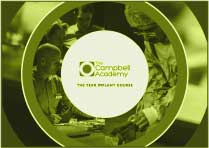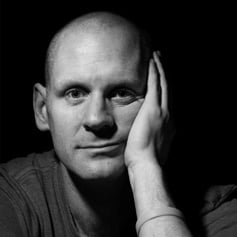
This week we started the business course that we’re running as part of The Campbell Academy.
Our chosen venue for this year is The Carriage Hall in Plumtree in Nottingham. It’s a beautiful venue but, as with all conference venues, the coffee is terrible. So we ship in our own artisan coffee van, you know the type – it’s all chrome with a great coffee machine and two people serving. They are proper baristas and the coffee is great coffee shop quality. The charge is a flat rate. They’re not even particularly fussed about how many people we have because it’s a self-limiting business model.
We’ve had it a few times now at conferences and courses and the routine is the same. People pitch up at the start of the day to the coffee van and ask for whatever they want, let’s say an Espresso, the coffee van man offers them a triple Espresso if they’d like and they’re delighted and say yes. The drink that and have another one in a few minutes. By 10:30 or 11:00 in the morning, nobody wants coffee anymore, they’re all on to the herbal teas (which cost next to nothing to the coffee van) and their work is done! By mid-afternoon everyone is on the water and can’t imagine another cup of coffee for at least 2 or 3 days!
Self-limiting business models are very clever. The ‘unlimited refills’ at KFC are a self-limiting business model; it’s actually physically impossible to drink £1.50 worth of fizzy drinks at the price they pay for them so they can’t lose.
So this brings us to the two types of business models in dentistry, the lifestyle model and the legacy model. Almost every dental practice I’ve ever seen is a lifestyle model. This involves the practice doing the work month by month, taking in the money, paying the expenses and whatever is left at the end the Principal takes away. If the practice wants a new OPG machine they have to ask the Principal and he has to decide if he has enough money in the bank account at home to buy an OPG machine, which he resents because he could have spent that money on something else.
Over the years this has developed in independent practice to the position where the Principal is the highest grosser (usually 70% of gross or more) with everybody else in the practice helping him to pay the bills. They catapult the practice towards £2m turnover (this was generally the glass ceiling, although with inflation it’s probably increasing) but it’s a self-limiting business model.
The Principal works 5 days a week, placing and restoring implants or doing Orthodontics or aesthetic dentistry of high value and no one in the practice can match his daily gross. If he then takes time off clinical work to concentrate on the business the practice gross drops because it is a self-limiting business model because the people that he spends time on can’t possibly match his daily gross and therefore the time he gives up is not productive.
The answer to a self-limiting business model is a legacy business model (I made up that name and I’m open to suggestions for a better one)
This is a situation where you accept the j-curve of investing in a better team, one which has the ability to gross, perhaps not quite as much as you, but more people grossing a considerable amount. There can be a mixture of associate models and salaried models depending on what you want to do and the enhancement and training of the team is critical – where the dental nurse support team are able to take photographs, x-rays, impressions, CBCT scans, provide TCO roles, training roles and any number of other associated tasks – leaving the dentist free to do the high end dentistry, the hygienist free to do the high end hygiene and the technician free to do the high end technical work.
The thing about a legacy business plan is that it’s a legacy project. It’s the attempt to design a business that can exist without the Principal and can continue to exist when the Principal decides to stop n.b: selling to a corporate isn’t a legacy project because you’ll never retain the business in its intended form when it goes to the corporate environment.
It’s a tough decision to make because It’s a long term decision and initially the return out the business will be less, lifestyle will be affected and it might not work. In society as a whole though as we find now that the shareholder value model of corporations is broken and in fact being legally challenged, there will be a shift and a change over the next few generations.
Less and less people are prepared to be ‘unspoken cogs in the wheel’ and millennials want to feel like they can make a difference. Generation Y wants to be heard and has a conscience.
Good, motivated, talented people in business with good attitudes will not just accept the status quo anymore, they want to see a business moving forwards, developing, investing, rewarding and contributing.
The self-limiting, lifestyle business model in dentistry is utterly dead. Either you will be a corporate or you will be a legacy, I don’t believe there is space in the middle for anything else.





Leave a comment